

Note: This question is part of a series of questions that use the same or similar answer choices. An answer choice may be correct for more than one question in the series. Each question is independent of the other questions in this series. Information and details provided in a question apply to that question.
You have a database for a banking system. The database has two tables named tblDepositAcct and tblLoanAcct that store deposit and loan accounts, respectively. Both tables contain the following columns: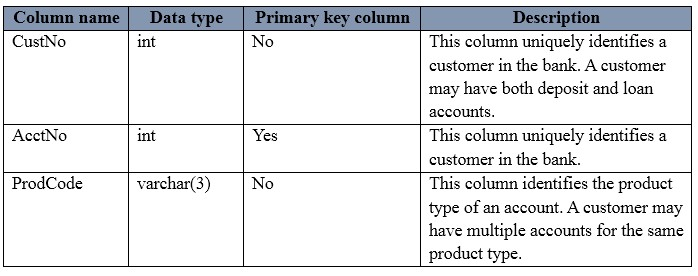
You need to determine the total number of customers who have only loan accounts.
Which Transact-SQL statement should you run?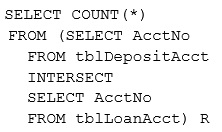
A.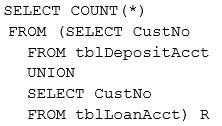
B.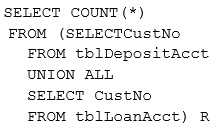
C.
D.
E.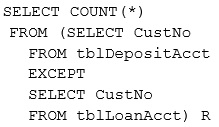
F.
G.
H.
KosteK
4 years, 7 months agoKosteK
4 years, 7 months agoKosteK
4 years, 7 months agoKosteK
4 years, 7 months agoVanesa30
5 years, 3 months agoxd1
5 years, 2 months agoxd1
5 years, 2 months agoBraindripper
4 years, 9 months ago